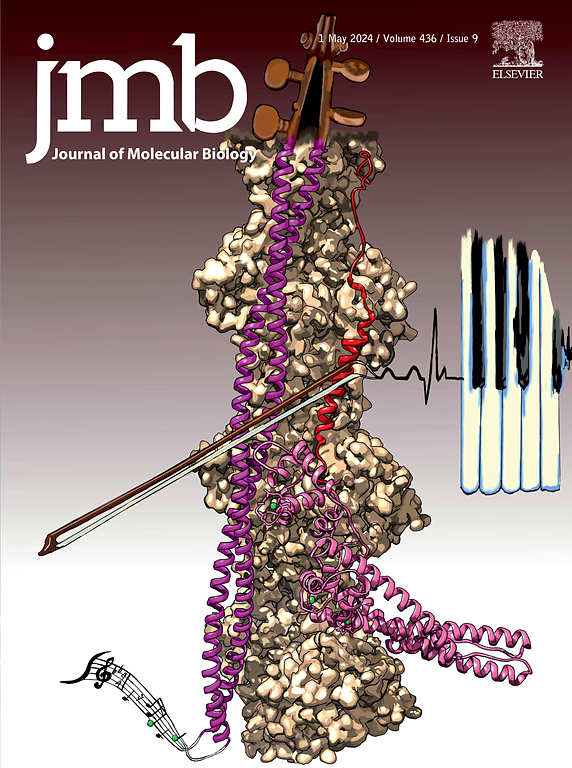Conversion of Human Multidrug Transporter P-glycoprotein (ABCB1) from Drug Efflux to Uptake Pump: Evidence for a Switch Region Modulating the Direction of Substrate Transport
IF 4.7
2区 生物学
Q1 BIOCHEMISTRY & MOLECULAR BIOLOGY
引用次数: 0
Abstract
The multidrug transporter P-glycoprotein (P-gp), is pivotal in exporting various chemically dissimilar amphipathic compounds including anti-cancer drugs, thus causing multidrug resistance during cancer treatment. P-gp is composed of two transmembrane domains (TMDs), each containing six homologous transmembrane helices (TMHs). Among these helices, TMH 6 and 12 align oppositely, lining a drug-binding pocket in the transmembrane region which acts as a pathway for drug efflux. Previously, we demonstrated that specific mutations within TMH 6 and 12 resulted in loss of substrate efflux and altered the transport direction from efflux to uptake for some substrates. This suggested the presence of a regulatory switch that governs the direction of transport. In this study, we sought to elucidate the mechanism of switch region modulation of the uptake function by engineering several mutants via substituting specific residues in TMH 6 and 12. We discovered that the alanine substitution of four residues (V974, L975, V977, and F978) within the upper region of TMH 12, along with three residues (V334, F336, and F343) within TMH 6, was sufficient to convert P-gp from an efflux to an uptake pump. Additional mutagenesis of the residues in the middle region of TMH 12 revealed that the uptake function, like efflux, is reversible. Further studies, including molecular dynamics simulations, revealed that the switch region appears to act during the substrate translocation step. We propose that the switch region in TMH 6 and 12, which modulates the direction of transport by P-gp, provides a novel approach to selectively target P-gp-expressing cancer cells.

求助全文
约1分钟内获得全文
求助全文
来源期刊

Journal of Molecular Biology
生物-生化与分子生物学
CiteScore
11.30
自引率
1.80%
发文量
412
审稿时长
28 days
期刊介绍:
Journal of Molecular Biology (JMB) provides high quality, comprehensive and broad coverage in all areas of molecular biology. The journal publishes original scientific research papers that provide mechanistic and functional insights and report a significant advance to the field. The journal encourages the submission of multidisciplinary studies that use complementary experimental and computational approaches to address challenging biological questions.
Research areas include but are not limited to: Biomolecular interactions, signaling networks, systems biology; Cell cycle, cell growth, cell differentiation; Cell death, autophagy; Cell signaling and regulation; Chemical biology; Computational biology, in combination with experimental studies; DNA replication, repair, and recombination; Development, regenerative biology, mechanistic and functional studies of stem cells; Epigenetics, chromatin structure and function; Gene expression; Membrane processes, cell surface proteins and cell-cell interactions; Methodological advances, both experimental and theoretical, including databases; Microbiology, virology, and interactions with the host or environment; Microbiota mechanistic and functional studies; Nuclear organization; Post-translational modifications, proteomics; Processing and function of biologically important macromolecules and complexes; Molecular basis of disease; RNA processing, structure and functions of non-coding RNAs, transcription; Sorting, spatiotemporal organization, trafficking; Structural biology; Synthetic biology; Translation, protein folding, chaperones, protein degradation and quality control.
 求助内容:
求助内容: 应助结果提醒方式:
应助结果提醒方式:


